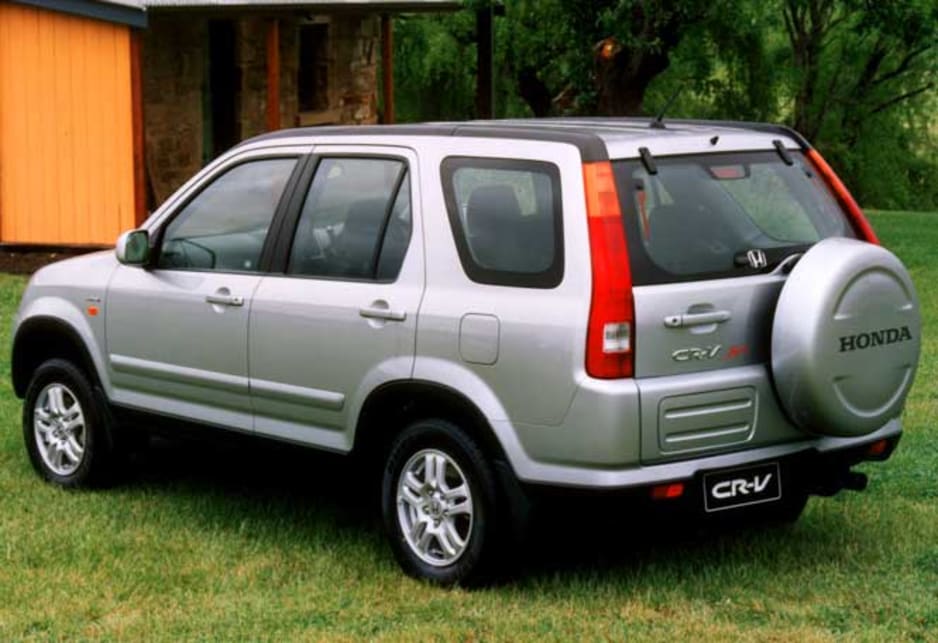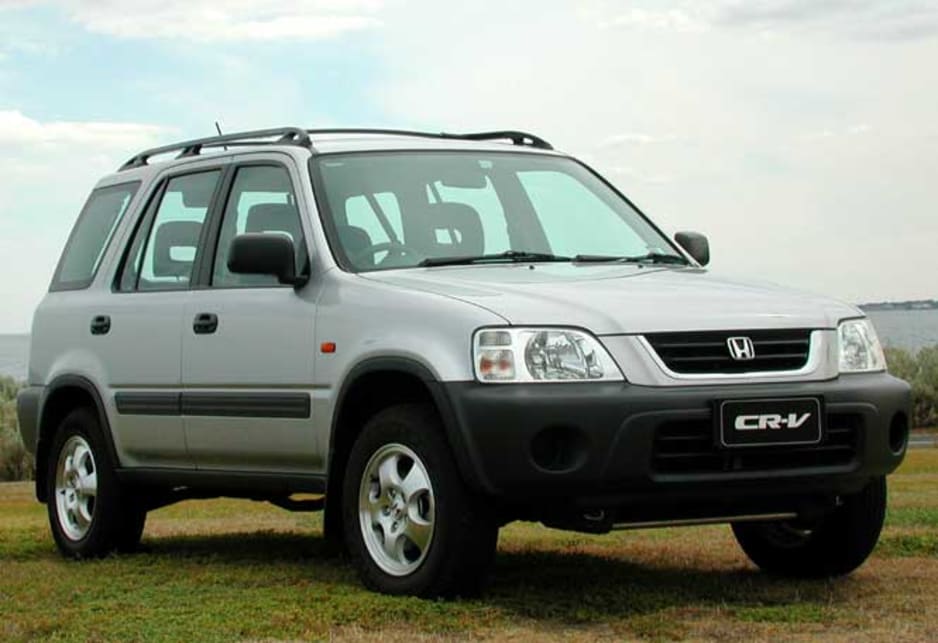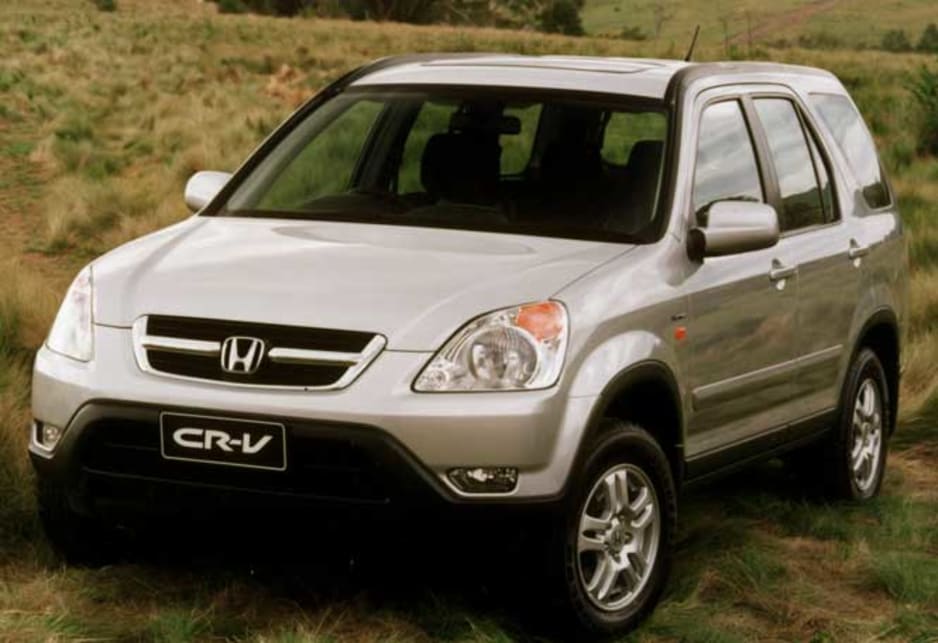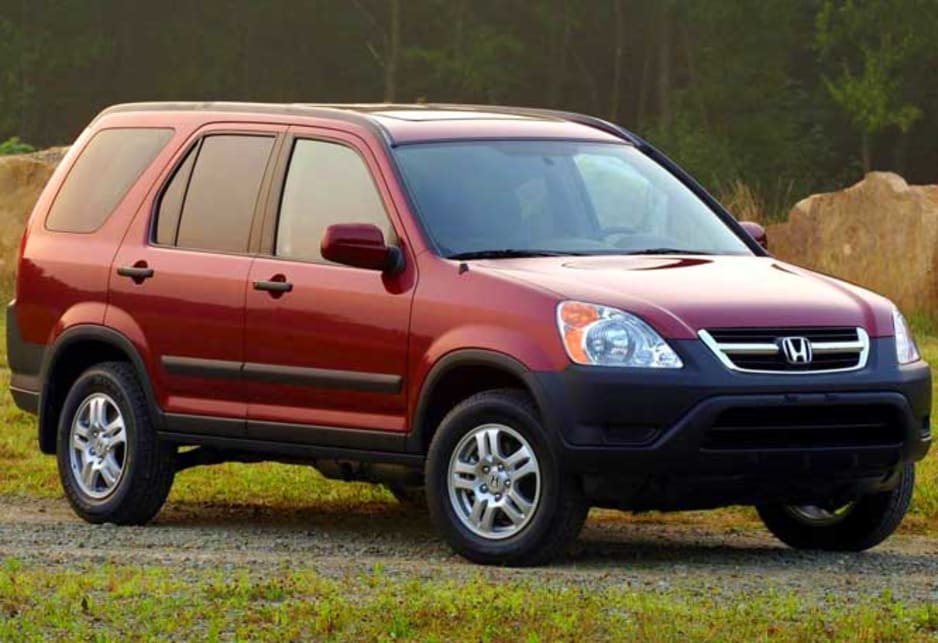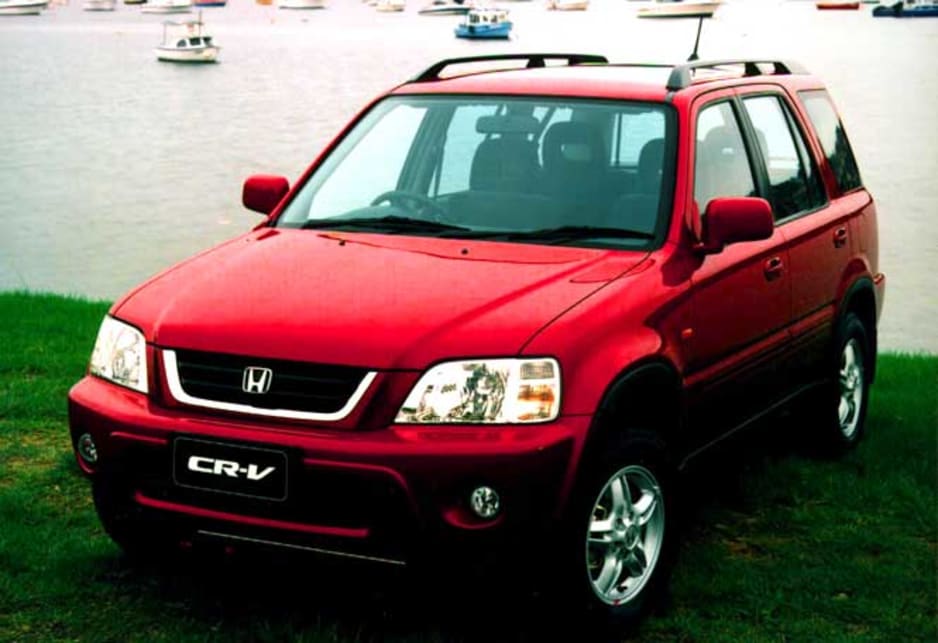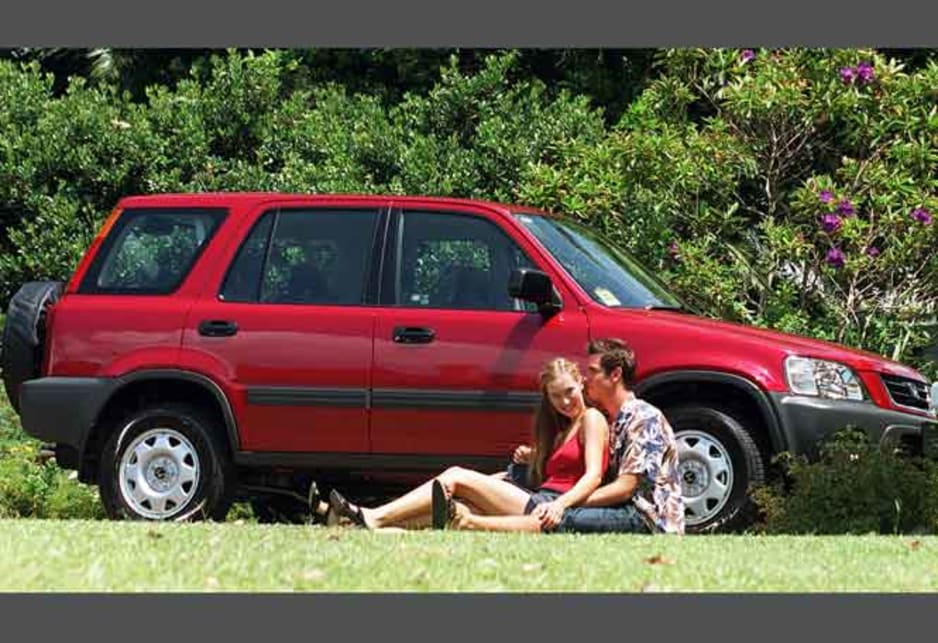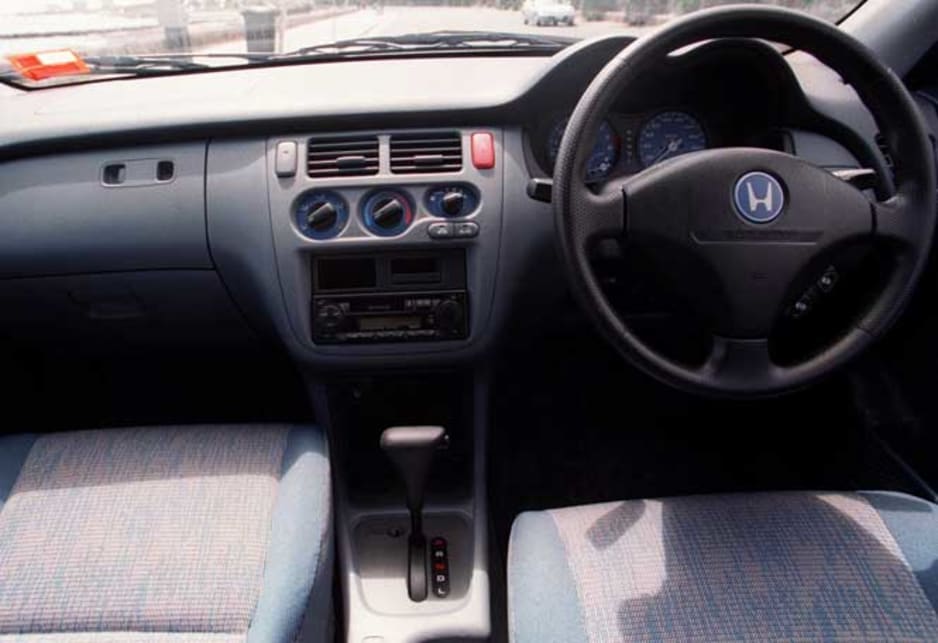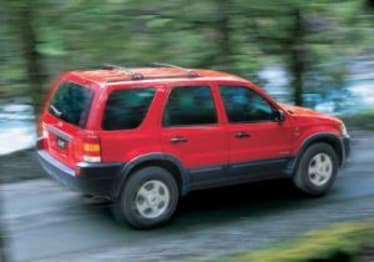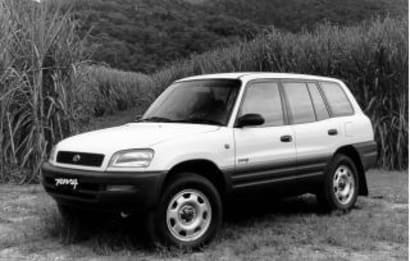
Used Honda CR-V review: 1997-2001
- Honda CR-V
- Honda CR-V 1997
- Honda CR-V 1998
- Honda CR-V 1999
- Honda CR-V 2000
- Honda CR-V 2001
- Honda CR-V Reviews
- Honda Reviews
- Honda SUV Range
- SUV
- Honda
- Used Car Reviews
- Buying tips
Anyone who has taken the time to look at new car sales figures over the last few years will have seen a phenomenon taking place that has transformed the local car market in a way few others have before. That phenomenon is the popularity of four-wheel drives, most particularly those at the light to medium end of the four-wheel drive segment like the Honda CR-V.
The CR-V is currently under siege from Nissan’s popular X-Trail compact four-wheel drive, but before the Nissan hit the market the Honda was a clear leader in the segment and on the latest sales figures is still the second most popular compact four-wheel drive on the local market.
On those same figures there is no let up in popularity of these vehicles in sight. So popular are four-wheel drives that companies like Subaru, Volvo, Audi, BMW, Benz, and even Porsche have felt the need to join in the party with four-wheel drive models of their own. Latterly, Ford and Holden have announced plans to launch new four-wheel drive models, the Territory and Adventra respectively. So convinced is Ford of the strength of the phenomenon that it is pinning its future on the Territory, although it prefers to describe it as a new type of all-purpose crossover vehicle rather than a four-wheel drive.
The move to four-wheel drives isn’t new, it began back in the 1970s when they were promoted as getaway vehicles for people who dreamt of going bush or to the beach in their leisure time while spending their weeks battling gridlock in our cities. There is still an element of the dream time drive in the ongoing four-wheel drive success story, but there’s much more to it now.
In essence people see them predominantly as economical family wagons, a replacement for the traditional station wagons made by car makers like Holden and Ford, but lighter and with more economical four cylinder engines. They also value the virtues of down-the-road vision with its perceived safety that comes with a high seating position.
The CR-V wasn’t the first to enter the market, that honour goes to Toyota’s RAV4, but it was the first to really appeal to families as an alternative to the old full-sized station wagon. Toyota really failed to understand the market when they initially pitched the RAV4 at young buyers, the ones who wanted to spend their weekends at the beach after a trying week in town. It missed the mark, and the Honda was pretty well established by the time Toyota revamped its approach with a wagon that suited families.
MODEL WATCH
The CR-V hit the road running in 1997 and hasn’t looked back. Offered as a four-door wagon only, with four-wheel drive on demand, the CR-V was powered by a 2.0-litre four cylinder engine and had a choice of five-speed manual or four-speed auto.
Honda’s on-demand four wheel drive system isn’t really designed for heavy off road going, it’s more an intelligent all-wheel drive system that handles loose or slippery surfaces with aplomb, and tackles rough tracks with assuring competence, and that makes it an ideal family fun off-roader.
The system employs a clutch between the propeller shaft and the rear differential, each of which drives a hydraulic pump. The amount of clutch engagement is determined by the difference between the front and rear axles (or pumps). If the axles are spinning at the same speed the clutch is disengaged and only the front wheels are driven, but if the front axles are spinning faster than the rears the clutch engages and torque is sent to the rear wheels. The degree of engagement of the clutch is dependent on the difference in speed between the front and rear axles, the greater the difference the more the clutch is applied.
The good thing is that the driver doesn’t have to do anything, the system takes care of everything.
The downside is said to be that the time lag before the rear wheels kick in can lead to problems in heavy going where the CR-V can get bogged down because the front wheels are overwhelmed before the rears are able to help out. For the most part that’s not a problem and few CR-V owners are likely to experience any problem.
Most owners are happy with the performance of the double overhead cam, four valve, fuel-injected 2.0-litre engine, although there was the occasional gripe that the 94 kW and 182 Nm it had when released wasn’t enough grunt. An upgrade in 1999 saw output boosted to 108 kW and there are few complaints with that.
For most the CR-V is a roomy, well equipped wagon that performs family duties well. It comes standard with air-conditioning, dual airbags, remote central locking, engine immobiliser, metallic paint, power mirrors, windows and steering, a radio cassette and roof rails.
A Sport model was introduced in 1999, and that came with alloy wheels, ABS, fog lamps, sunroof and a hard cover for the spare wheel.
Another model, the Classic, was introduced in 2001, and that featured alloy wheels and CD sound in addition to the long list of standard equipment.
IN THE SHOP
Safety is an issue with four-wheel drives and an important one for anyone thinking of buying one. The popular four-wheel drives simply aren’t as safe as a regular family four-door and that needs to be understood.
Their crash performance doesn’t match that of normal sedans, and importantly, their ability to avoid a crash is much less than a regular sedan. That high driving position may be great for seeing down the road, and good vision is definitely a good thing, but it also means a high centre of gravity and that means it won’t change direction as precisely as a car sitting lower.
The CR-V’s handling is not the best in its class, although it is predictable and in that sense safe enough. Pushed hard into corners the CR-V will heel over and understeer, its reaction to steering input a little slow.
Otherwise the CR-V is reliable and robust with high build quality and good quality interior trim and plastic parts. Honda once had the reputation for having the highest spare parts prices, but the company has done lots of work to get those prices down in recent times and they’re not the problem they once were.
Few CR-Vs will have gone off-road in any serious manner, so if you see one that appears to have been thrashed through the bush check it carefully as there are heaps on offer that have never left the black top.
OWNERS’ SAY
Peter Fletcher of Keilor in Melbourne rates his 2000 CR-V Sport auto 10 out of 10. It’s done 35,000 km as a commuter vehicle for his wife and on trips to Lake Eildon on weekends where it has handled the slippery slopes without a problem. He says it’s been an excellent all rounder, with good performance and economy.
Andrew Want is also enamoured with his CR-V, a 2002 Sports auto. It’s safe, economical, roomy enough for his family, comfortable on a long trip, looks good and has good resale value.
Chris Costa is another love-struck owner. Chris says his 1998 manual hasn’t been off-road yet, but he loves the interior space, fuel economy, looks, and the foldaway picnic table.
Corey Passlow was looking to downsize when he traded a Toyota Prado on a 2002 CR-V Sports. Corey has had problems with scrubbing out the front tyres, and an unfortunate experience with his dealer in resolving the problem. Front end alignment is the cause of the problem, but how it came to be out is the reason for the dispute. Corey says he’s trading the CR-V on a Holden ute.
John Hansen bought his 1999 CR-V privately two years ago with 50,000 km on the odometer. It’s now done 80,000 km and hasn’t given a moment’s trouble. John says he’d happily have another one.
Ross is happy with his 1998 CR-V which he says hasn’t given any trouble, but he says it has been a disappointment on the occasions he has taken it off road. “The four-wheel drive function is virtually useless,” he says.
Thomas of Lake Bolac in Victoria is not happy with his 2001 CR-V, which he says is underpowered with unacceptable engine noise. It regularly stalls and is poorly geared. He also says the seats are uncomfortable.
David Howard’s 1997 CR-V has done 186,000 km and hasn’t given any problem. David traded a Ford Fairmont on the CR-V and went “from dodgy electrics, overheating and atrocious duel economy to a practical car with perfect reliability and good fuel economy”. Overall David says he’d be happy to recommend the CR-V to friends, his only gripe being seating comfort and the lack of a lap sash seat belt in the centre rear seat.
Craig of Lilydale in Melbourne has owned two CR-Vs. He did 100,000 km on the 1997 model he first owned, and has now done 63,000 km in the 2000 model he now owns. He says the CR-V is perfect for the family with plenty of space, it’s been very reliable and is well built. Craig also says it is the best towing vehicle he’s ever owned.
David Jones of Wollongong says he’s happy with his 2002 CR-V Sport auto. It has plenty of get up and go, has no trouble towing his fishing dinghy, is easy to live with and drive, and is well built. He rates it 7.5 out of 10.
LOOK FOR
• lots of room for family
• good visibility from high seating position
• very good build quality
• reliable engines and gearboxes
• occasional off-road capability
• prestige badge
• check crash performance
• signs of bush bashing
Pricing
| Year | Price From | Price To |
|---|---|---|
| 2001 | $2,310 | $6,380 |
| 2000 | $2,310 | $5,280 |
| 1999 | $2,310 | $5,280 |
| 1998 | $2,860 | $5,280 |
| 1997 | $2,860 | $5,280 |
Pricing guides
Range and Specs
| Vehicle | Specs | Price* | |
|---|---|---|---|
| (4X4) | 2.0L, ULP, 5 SP MAN 4X4 | $3,410 – 5,280 | 1997 Honda CR-V 1997 (4X4) Pricing and Specs |
Other cars to consider
$2,860
Lowest price, based on third party pricing data



